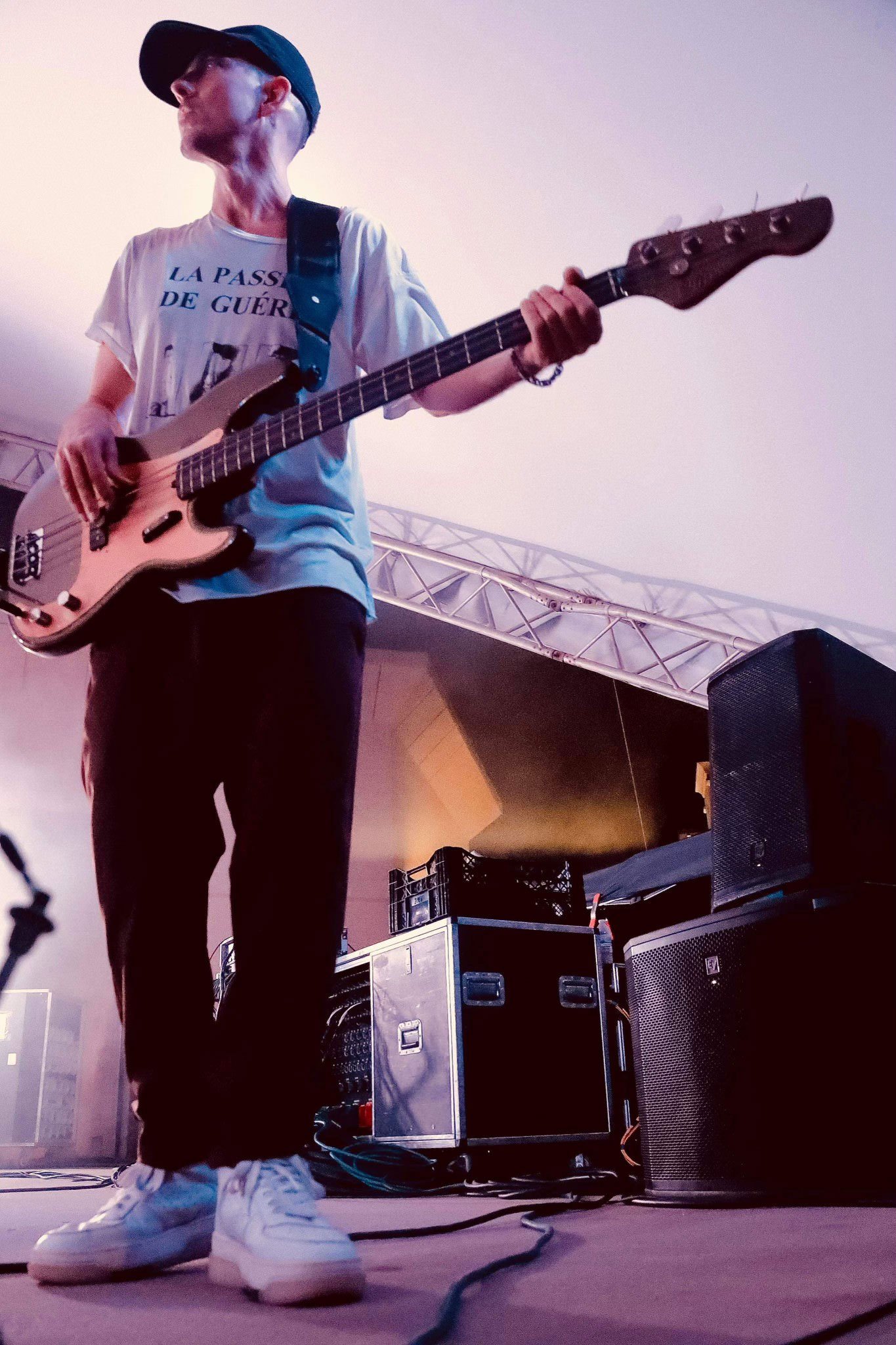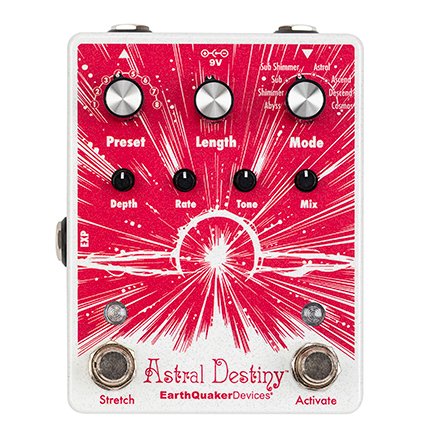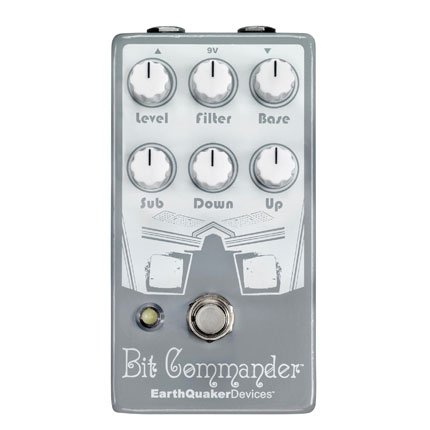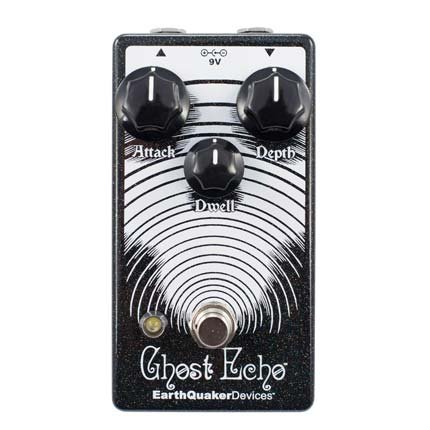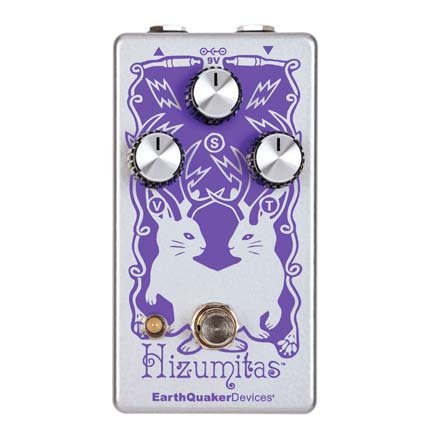Stu Brooks : Modern Dub Master
Jon D’Auria
Upon completing bass and production for film scoring legend and ex-Oingo Boingo frontman Danny Elfman’s solo album, Big Mess, along with the subsequent remix albums that he was appointed to take the reins of, Stu Brooks shifted gears to join Jane’s Addiction’s Perry Farrell and his Kind Haven Orchestra for a series of high-profile performances. Fresh off of those shows, Brooks hopped on a touring stint with reggae singer Matisyahu, which is a gig that he previously held for many years, before heading back to his studio for his next sessions. All of this would seem like a lot at once, but it’s more impressive when you learn that he was also producing and completing his debut album as a solo artist, The 40Hz EP, which is due out in December, while taking all of that on.
Surprisingly, that’s not an unusual workload for the Canadian-born, Los Angeles-by-way of-New York transplant who is most commonly found in the studio burying his head in beats and creating sub-sonic frequencies. His rise to prominence as a bassist began with his time at the Berklee College of Music before moving on to start his own band, Dub Trio, who still continue to push the boundaries of dub and metal. His talents began to extend beyond the trio, as Brooks started getting calls to work with the likes of Lady Gaga, Lauryn Hill, 50 Cent, Mary J. Blige, Mike Patton, Kanye West, Dr. John, Pretty Lights, Mark Guiliana, GRIZ, and even performing in the Saturday Night Live band. His passion for the studio led him to take on a bigger role as a producer, which is one of the many hats he currently wears today.
It was only a matter of time before his talents and constant collaborations would lead to a solo album of his own, and that time is finally now. Partially sparked by having downtime during the pandemic following his 2019 move to LA, he began writing songs and enlisting friends like Patrick Stump (Fall Out Boy), Angelo Moore (Fishbone), Matt McJunkins (A Perfect Circle), Paul Leary (Butthole Surfers), and others to contribute to his music. The album’s first single “Sound the Alarm,” is the perfect mix of memorable riffs, deep reggae dub bass, and catchy hooks that summarize his decades of writing across numerous genres. But one element that is essential to all things he creates is menacingly low bass, which is why the album’s title, 40Hz, is supremely fitting.
To achieve the kind of tone that he does, his gear is as essential to his sound as his infinitely rhythmic fingers are. Between his vast collection of basses, including both Olinto and Alleva Coppola Signature models that bear his name, and his remarkably large arsenal of pedals and effects, Brooks always has the right sounds to dial in any tone needed. His EarthQuaker Devices pedals take up a large chunk of real estate in his studio, as 17 different EQD stompboxes have been used on various recordings and performances throughout his career. We figured it was about time to catch up with this tone alchemist to talk dub bass, his upcoming album, and of course, effects.
How does it feel releasing your first album as a solo artist? That has to be a very different experience for you, having been a band member and sideman your whole life.
Honestly, it’s been a process that has been very up and down for me. Before the album was conceived, I started making these songs with friends and some of my favorite artists simply for the fun and the love of it. At some point I realized I could potentially put these songs out under my own moniker, whether it be as 40Hz or my name. I ended up deciding to use my name because I thought this was a good opportunity for me to introduce myself to the world as a producer and songwriter. I wanted to challenge myself with creating songs that differ from one another, offering a huge stylistic spectrum while maintaining a common thread. Finding that thread meant that I had to find myself.
So conceptually, this album somewhat formed after you started writing the songs for it.
Definitely. Songs like “Sound The Alarm” (feat. Patrick Stump), “Frontline” (feat. Angelo Moore), and “Mob Music” (feat. Jason Aalon Butler) were the first batch of songs. After those, I had to make songs with the knowledge that they would be for my first “solo” project. For a while, I battled with the voices in my head, trying to figure out what the hell it was going to sound like. After pushing through a lot of fear, loathing, uncertainty, and doubt, I eventually was able to develop a sound palette that I loved and started building sketches that were truly the sounds I want to make. I think as songs roll out, it will be evident that there was an evolution over the course of making the record, as the tracks will be released in chronological order and gradually end up getting more and more venomous.
What was the writing process like for this? Did these primarily start out on bass?
It varies from song to song. I’ve been using a lot of drum machines, drum synths, synths, and samples and I have a semi-modular midi setup that I’ve been building for the past couple of years. I’m able to improvise and create in a way that’s very performance driven. I’ll end up recording a ton of content and I’ll leave the session feeling like it was a complete musical experience in “jamming” with myself. It was totally a productive thing while being isolated during the pandemic. Other songs are very deliberately laid out as opposed to improvised. I’d start out with drums usually and then build a bass line or a riff or a chord progression. A lot of the time, bass guitar is the last thing I put down. Once the instrumental is in a good place, I start thinking of which artist it would work well with and begin reaching out to friends of mine to co-write and sing on them.
You have an impressive list of collaborators on this. Who can we expect on the EP?
This is very much a collaborative record. I’ve been working with Matt Cronk (Qui, Cunts, Fake Legs), Matt McJunkins (A Perfect Circle), Jason Aalon Butler (Fever 333), Patrick Stump (Fall Out Boy), Angelo Moore (Fishbone), N8NOFACE, J Randy, and Paul Leary from Butthole Surfers.
Which pedals and effects did you use on these songs?
You can hear a bunch of sounds made by stomp boxes. Hizumitas from EQD made a great impact on the N8NOFACE track. The Mothership 2 by Pigtronix is super cool and the Bananana Matryoshka made some sick synth bass sounds with my electric bass. Recovery Effects Sound Destruction Device is nasty on the Paul Leary/Fake Legs track. The Meris Ottobit made an appearance along with the Bitmap 2 from Red Panda. The Tensor has been fun to use on some synth as well as the Microcosm from Hologram.
When did you first start using effects on bass?
When I was a teenager and just starting out, I got into them pretty quickly. But by the time I got to the Berklee College of Music I pretty much left those behind and mainly played direct. It wasn’t until I had moved down to New York City that I became interested in effects again, when the band I was in started to incorporate electronic music into its sound.
What were the first pedals you owned?
Early on I had some BOSS pedals, like their Digital Delay DD-5, Super Chorus CH-1, and Metal Zone, ha! But later, after college, I got into Moog pedals like the Moogerfooger MF-101 and the Boss Octaver. Such a great combo!
What’s the key to getting authentic dub tone and what’s your best advice for dialing in that sound?
First of all, I can’t say that I ever achieved that! My approach to getting a good dub tone has definitely changed over the years. But first, I would say get some LaBella flatwound strings. I love the La Bella 0760M Deep Talkin’ Bass 1954 Stainless Flat Wound 52-110 set. Those are heavy gauged! That’s actually the very same string set that James Jamerson used.
As for using effects to achieve a good dub tone, it really depends on the song and what it calls for. There are so many different types of dub tones. Oftentimes I have a woofy, round, and sometimes wooly tone. The fur around the tone helps cut through the mix. But more recently I like going for more of a punchy tone. It depends on the bass you use. I find a Hofner or Gibson EB-2 would be great for old school punchy reggae tones. I usually use a Fender Jazz with an Aguilar Preamp and flatwounds and that gets me a super round and subby dub tone.
You and Dub Trio drummer Joe Tomino sample each other live as you’re playing. Explain that process and how it came about.
We manipulate each other on stage sonically. Rather than a “solo” section, we do a “dub” section, which is like the anti-solo [laughs]. We strip back and feature bass and drums while guitar and keys pop in and out much like a dub record. We improvise the arrangement changes and improvise the dub effects. It really creates spontaneous musical dialogue and adds a whole other, massive, dimension to the band’s sound.
How exactly do you pull this off?
I’ll run the drum set through a pedal chain that I manipulate and effect in real time as a way to make live dub. I get a send from the drums with a microphone on the snare or hi-hat region and have it sent to a volume pedal, which would then keep it muted. But when I’d open it to affect the drums, I’d turn up the volume pedal that would send the signal to a chain of traditional effects sounds in dub such as reverb, delay, phasers or filters on the drums. I could simply open the microphone with my foot pedal while playing the bass. Joe would do a similar thing where he’d play one handed and manipulate the effects with his other hand. The live dubbing process is a bit atypical. Live shows usually have a front of house sound engineer creating the dub. With a studio recording, the dub is usually produced in the control room by the engineer. We do this live and have more control to react to each other’s effects and moves we make. The dub becomes another instrument and voice for us on stage. We are able to create a musical dialogue by using a call and response, delay on the drums or reverb. We’re able to improvise live form, arrangement and effects making each individual show unique.
You also use your EQD pedals in unorthodox ways. Explain how you use them in the music of Dub Trio.
I use EQD pedals on a variety of instruments, not just bass. For years now, I have been using the Disaster Transport SR and Ghost Echo in this chain. The Ghost Echo is particularly amazing sounding if you want to get a deep pre-delay on your Snare dubs. There’s also more than one song that we put the entire mix at FOH through a Bit Commander. That was one of the most brutal sounds I’ve ever achieved with a band. It was on the song “Noise” off of the album IV.
Which EQD pedals have you been currently using on your most recent projects?
On the board I have the Hizumitas, The Depths, and Disaster Transport. On keys, I’m using the Astral Destiny to effect the Dave Smith Mopho x4.
Which of those is currently your go-to?
I’m loving the Hizumitas on the bass right now. It’s giving me a grizzly, tubby sound that’s super exciting. I’m making use of the sustain (compression) feature. It will hold out a note for eternity and the I can sweep the EQ knob to get it to sit right in the mix. Super easy to use. That pedal really sounds simply amazing from the get-go.
What do you do when you first get a new pedal? How do you break it in?
If it has presets, I cycle through those and find one that inspires me. Then I will probably tweak the parameters from there. I usually try to explore the pedal as much as possible on my own and have a bit of fun, but then I’ll reserve some time to dive into the manual and get a more detailed look at it. This is all depending on how complicated it is.
What are your thoughts on the evolution of plug-ins versus pedals, and how much do you use plug-ins now?
It’s a super exciting time right now being that we’re in the middle of a pedal renaissance and simultaneously there are so many amazing plug-ins coming out. I love using amp modeler plug-ins for the bass, but I would definitely gravitate towards using pedals for effecting it. I much prefer the analog sound and the ability to get your hands on knobs to manipulate versus automation.
What’s your best advice for using pedals in the studio to record?
If it’s for my own session and I’m exploring, I think the key is to take time to have fun and be playful with them. I like to reserve time to jam out and experiment in the studio. I usually find that to be a great way to discover new sounds and really get to know the pedal and sometimes some magic can happen. I get really excited when I sculpt a new sound. That usually happens by combining pedals and effects. It’s so damn fun.
When I’m doing a session for hire, I usually don’t use effects as much. I think it’s really important to keep it simple on other people’s material but to bring a good DI and maybe some good drive/gain/distortion options. Feel it out and see how experimental the producer or artist wants to get. Sometimes bringing the deluxe pedalboard can be really exciting for a client and inspires them. Other times, it’s not the right call. Feel it out and see what the vibe is. If the song has some fuzz on the bass in the demo, bring a few options to try out. Do what the song is calling for but also get a feel for how experimental the producer and artist want to get.
Most players have very specific orders that they set up their pedal chains. What is your preference on the order of your effects?
My board at the moment has synth pedals first, distortion and fuzz, EQ/gain, filters, compression in that order. And then I add the more dynamic stuff after those such as delays, verbs, and loopers.
Which bassists have influenced you the most when it comes to using effects?
I mean, Tim Lefebvre has been a huge influence on me for the past 22 years in watching him play around NYC when we were living there and beyond. Early on in my pedal career, I heard Stomu Takeishi doing some crazy loop stuff that blew my mind. Juan Alderete and Nick Reinhart and their Pedals & Effects video blog was influential, but a lot of my inspiration for effects has come from electronic artists and not so much from bassists.
What’s your best advice for a bass player on using effects?
Make sure you have a clean line that is direct and bypasses all your effects in parallel with your effected channel. That way the mixer can maintain a consistent low end and can sculpt the tone as a whole, between clean and effects. It makes a huge difference and is way more effective than without it.
Stu Brooks’ EQD Pedal Collection
Afterneath / Astral Destiny / Avalanche Run / Disaster Transport SR / Dispatch Master / Dunes / Fuzz Master General / Hizumitas / Hoof Reaper / Hummingbird / Organizer / Palisades / Park Fuzz Sound / Pitch Bay / Sea Machine / Sound Shank / The Warden
Jon D'Auria has been in music journalism for over 16 years as an editor, columnist, staff writer, photographer, web editor, and gear editor. He has conducted over 400 interviews and has been lucky enough to connect with most of his bass heroes. When he's not writing, he keeps busy gigging, running, reading, hanging out with his two huskies, and attempting to teach his toddler slap bass.

